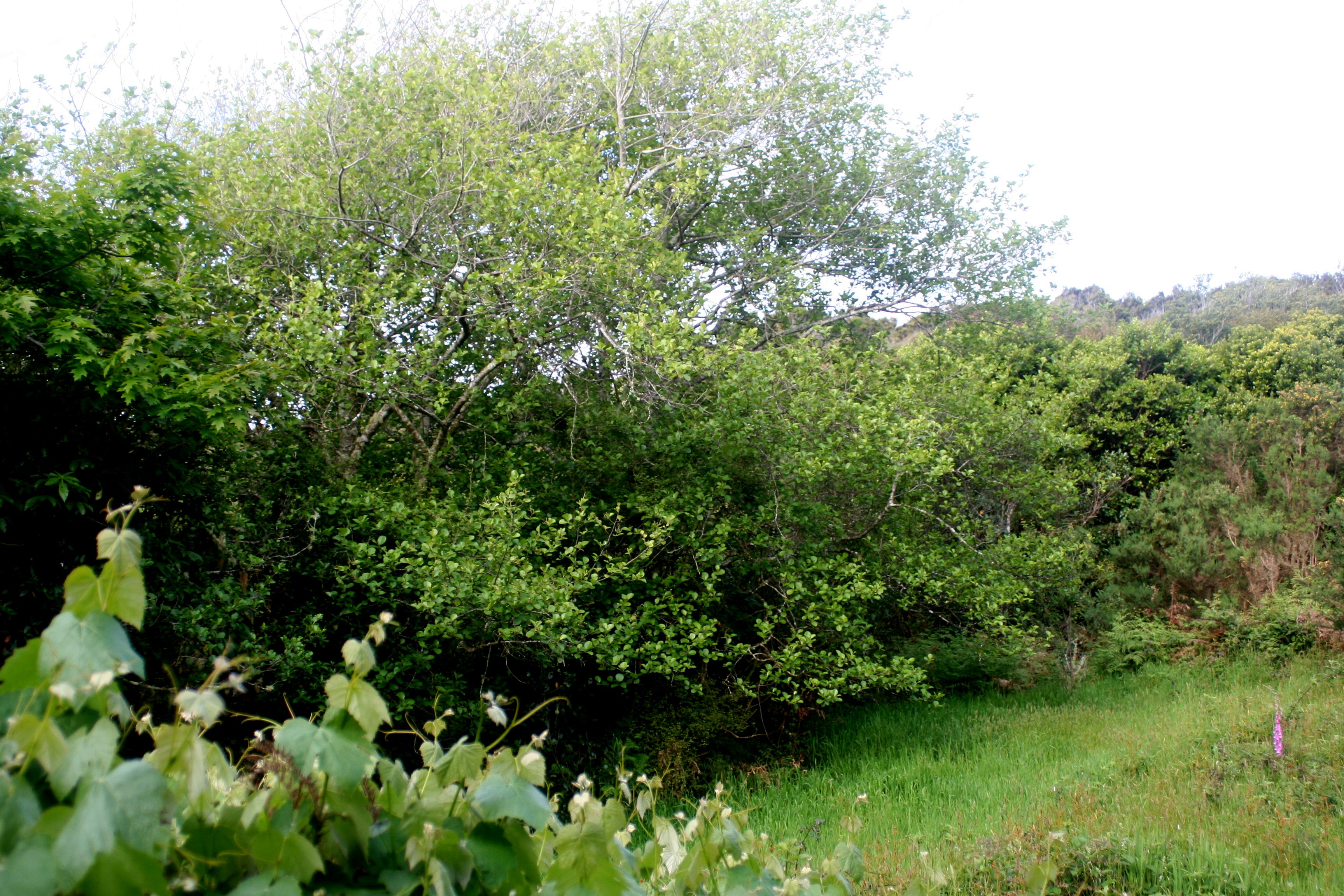Dial-a-Tree Virtual Tree Nursery
Tree Stuff Blog
Alders - Good all-rounders for agroforestry
www.dialatree.co.nz
Although out of fashion, and less well known in Aotearoa than oak or willow, Alder (Alnus rubra, cordata, etc) is another useful hardwood tree from the northern lands. It grows fast and furious in any area with rain, or anywhere near water. They can handle quite wet feet but not permanent flooding. They will take any amount of frost.
Given deep moist soil, and fed with manure and fertilisers, they can throw a great tree up in twenty years to match any radiata pine for girth, with winter leaf fall providing sunlight and compost. Then they don't get much bigger, remaining a medium sized tree rather than an ugly giant. They will tolerate poor soils and are used to reforest industrial waste heaps and mining tailings. On good wet farm soil they will produce a hardwood log after twenty years ready for milling. The timber is a light hardwood like poplar. Often a deep orange colour it is used for clogs, furniture, house piles, wharf pilings, and end uses under water where it is preserved by the moisture, like oak.
In Europe (Italy, Northern Britain) it was traditionally cut at about nine years old, with long, small diameter rounds, perfect for burning and the best species on earth for charcoal making. Posts and hardwood weatherboards can be home produced as timber products for farm use.
After much of the natural douglas fir forests of NW USA were cleared, millions of Red Alders sprouted back as regrowth. At first it was thought a useless weed but now it is thinned and grown there for its timber as a valuable second rotation tree.
Anyone considering self sufficiency in biofuels or firewood will want to try some of these. Alder has proven itself on my sandy, windy block to be one of the best fast growing firewood species. Cut at small diameters in the round, to save splitting, they dry quickly, and burn hot, nearly as well as old man gorse.

Red alders, sturdy in salt winds, 25 years old, about ten metres tall.
Beware the Bad Ones!
Beware: when being felled, like Eucalypts, Alder trunks can suddenly split and flick out, a dangerous habit known as the "Barber's Chair". Also, beware the Evil Black Alder (Alnus glutinosa). A Triffid. It grows only too readily and self seeds into surrounding areas, becoming a potential gigantic weed like wildling pines. Verboten Species!! Also prone to sticky aphids.
Stick to the Red alders (Alnus rubra) for fast growth and best results. Grey Alder (A. incana) are good and fast like the Red ones. Italian Alder (A. cordata) and Mexican Alder (A. jorullensis) are finer, smaller trees, but fast early growth means they establish quickly as shelter belts. Slower growing cordata produces the finest charcoal for gunpowder making (cordite). And hopefully, for art.
Alder has so much going for it. The tree is a natural soil improver with annual mineral-laden leaf fall, and nitrogen fixing roots. The strong interlocking roots also bind river banks for erosion control, as with willows. Dangling spring catkins provide bee food and look pretty.
Dropping their leaves for winter, they are ideal for use on northern paddock boundaries as summer shade and wind filters that let the winter sunlight in to the pasture.
Another agroforestry tick can be awarded for summer animal feed. In a drought, cattle can hammer them as forage and they will recover like willow and poplar.
In the eighties these trees had a surge of popularity as "Agroforestry super-trees," but Poplars won the battle and became much more fashionable. This is probably because Poplar can be so easily propagated on-farm with cut branches. Alder seedlings can be found all year round in rootrainers from forestry nurseries. They are best planted when dormant, in autumn and winter, from a foot tall upwards (30cm plus).

Grey alders, on sand. 25 years old, wind-pruned at ten metres
Back to dialatree www.dialatree.co.nz

